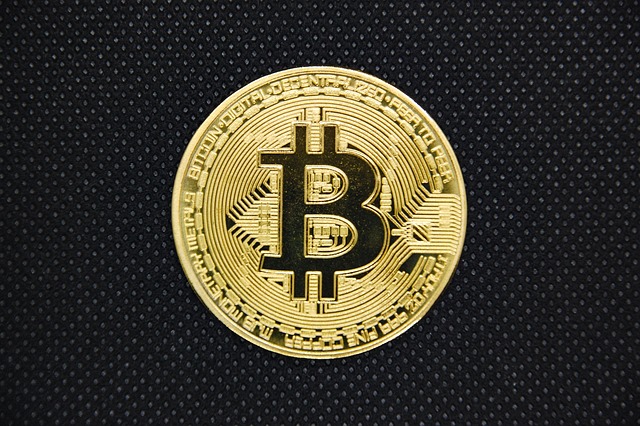Can You Send Bitcoin on Kraken in 2025? A Complete How-To and Guide
Author: Jameson Richman Expert
Published On: 2025-11-03
Prepared by Jameson Richman and our team of experts with over a decade of experience in cryptocurrency and digital asset analysis. Learn more about us.
Can you send bitcoin on kraken — short answer: yes. This comprehensive guide explains exactly how to send Bitcoin from Kraken in 2025, including supported address types, step-by-step web and mobile instructions, fees and limits, security best practices, automation options, troubleshooting tips, and regulatory considerations. Whether you’re withdrawing BTC to a hardware wallet, sending to another exchange, or moving funds for trading strategies, you’ll find practical examples, calculations, and links to authoritative resources to help you execute transfers safely and efficiently.

Overview: Does Kraken support sending Bitcoin?
Kraken is a major regulated cryptocurrency exchange and supports both deposits and withdrawals of Bitcoin (BTC). Sending BTC from Kraken means initiating an on-chain withdrawal to an external Bitcoin address or transferring BTC to another user’s exchange account. Kraken provides support for modern address formats (including SegWit), configurable withdrawal fees (network-dependent), and security controls such as two-factor authentication (2FA), withdrawal address whitelisting, and email confirmations.
Before sending, confirm your account is verified at the level required for withdrawals, understand Kraken’s fee model, and ensure the destination address is correct. Sending BTC on Kraken is common for users who want to custody assets off‑exchange, pay wallets, or deposit to other trading platforms.
Key terms to know
- On-chain withdrawal: A Bitcoin transaction broadcast to the Bitcoin network that consumes block space and requires network confirmations.
- Internal transfer: Moving funds between accounts on the same exchange — often instant and free.
- SegWit / bech32: Modern address formats that reduce fees and improve efficiency (addresses often start with bc1).
- Withdrawal fee: The fee charged by the exchange (or passed-through network fee) to process the BTC transfer.
- 2FA: Two-factor authentication used to secure withdrawals and sensitive account actions.
Supported Bitcoin address formats on Kraken
Kraken supports common Bitcoin address formats. Over the years Kraken has expanded support to include SegWit addresses to reduce fees and improve confirmation times. Typical supported formats:
- Legacy (P2PKH) — addresses starting with 1
- P2SH — addresses starting with 3 (often used for wrapped SegWit)
- Bech32 / Native SegWit — addresses starting with bc1 (recommended where supported)
Always verify on Kraken’s official support pages for the most recent address support list and the preferred address formats for lower fees. For Bitcoin fundamentals and address types, see the Bitcoin whitepaper summary on Wikipedia for context: Bitcoin — Wikipedia.

Step-by-step: How to send Bitcoin on Kraken (Web)
Below are practical, step-by-step instructions to withdraw BTC from Kraken using the web interface.
- Log in: Sign into your Kraken account at the official site (https://www.kraken.com). Always verify the URL and SSL certificate to avoid phishing.
- Complete any required verification: Ensure your account verification level allows BTC withdrawals. Kraken has tiered verification; some withdrawal capabilities require verified identity.
- Enable security protections: Make sure 2FA is set up (Google Authenticator or YubiKey) and that any withdrawal lock or whitelist settings are understood.
- Navigate to Funding → Withdraw → Bitcoin (XBT): Kraken labels Bitcoin as XBT on many pages. Click Withdraw next to Bitcoin.
- Add a withdrawal address: If the destination address is not already saved, add it. Enter the external BTC address (double-check), give it a label (e.g., “Cold Wallet”), and confirm via 2FA and email if required.
- Initiate withdrawal amount: Enter the BTC amount to send. Kraken will show the network fee and net amount.
- Confirm details: Confirm the address, amount, and fee. Kraken may require an email confirmation or a 2FA code for the withdrawal.
- Track transaction: Once submitted, Kraken broadcasts the transaction to the Bitcoin network. You’ll receive a transaction ID (TXID) you can use to track confirmations via a block explorer like Blockchain.com.
Note: Kraken often uses the label XBT instead of BTC. If you don’t see BTC listed, search XBT in the withdraw section.
Step-by-step: How to send Bitcoin on Kraken (Mobile app)
Mobile instructions are similar to the web flow but optimized for small screens:
- Open the Kraken app and sign in.
- Tap “Funding” → “Withdraw” → choose Bitcoin (XBT).
- Add or select a destination address, enter the amount, review network fee, and confirm with 2FA.
- Check your email (if Kraken requires email confirmation) and approve the withdrawal.
- Save the TXID and monitor confirmations via block explorer.
Fees, limits and expected confirmation times
Kraken’s withdrawal fee model typically includes a flat exchange fee that covers the outward transaction. The Bitcoin network fee portion changes with mempool congestion and block size. Kraken’s support pages list current withdrawal fees and limits — always check Kraken’s official fee page before sending.
General points:
- Network fee variability: Bitcoin fees vary by network demand. During congestion, fees rise. Using SegWit (bech32) addresses generally reduces required fees.
- Kraken withdrawal fee: Kraken may set a fixed fee (which it may round up/down) per BTC withdrawal; this is distinct from miner fees.
- Confirmation times: Typical block times average ~10 minutes. Kraken may require several confirmations (often 1–6 confirmations) before crediting or considering the withdrawal final on the receiving platform or wallet.
- Limits: Daily and monthly withdrawal limits depend on your verification tier. Higher tiers allow larger withdrawals.
For precise fee numbers and limit thresholds, visit Kraken’s official support pages and fee schedules. You can also compare network fee calculators and strategies for estimating transaction amounts in this practical guide: How to Calculate Transaction Amount — Practical Steps and Examples.
Fee example (illustrative)
Example: You initiate a 0.5 BTC withdrawal. Kraken displays a withdrawal fee of 0.0005 BTC (example figure). Net outgoing amount = 0.4995 BTC. The transaction is broadcast with a miner fee that may be included in Kraken’s fee or shown separately. Always use live data from Kraken before making transfers.

Common issues and troubleshooting
Here are frequent issues users encounter when sending BTC from Kraken and how to address them.
- Withdrawal locked due to new device or IP: Kraken may implement a security hold. Confirm via email or wait the hold period.
- Address rejected: If Kraken rejects an address, check format. Some exchanges and wallets require specific address types (e.g., not all platforms accept bech32 deposits).
- Missing confirmations: If your TXID shows 0 confirmations, the transaction is still in the mempool. Consider the current network fee — low fees may take longer to be confirmed.
- Transaction stuck: If a transaction is stuck due to low fee, it will eventually drop out or be replaced via RBF if you enabled that (Kraken’s wallet backend may not support RBF for every withdrawal).
- Wrong chain: Never send BTC to non-Bitcoin chains (e.g., sending BTC to a BTC-backed token on another chain); this can result in permanent loss. Confirm the destination chain first.
If you experience unresolved issues, contact Kraken Support with your account details and TXID. For additional troubleshooting strategies around sending and integrating with trading tools, see this analysis of TradingView trading capabilities and integrations: Can You Trade Through TradingView?
Security best practices when sending BTC from Kraken
Security should be your top priority when moving Bitcoin. Best practices include:
- Use 2FA: Enable a secure 2FA method (hardware keys or Authenticator apps). Avoid SMS 2FA where possible due to SIM risks.
- Enable withdrawal whitelist: If Kraken offers address whitelisting, lock your account to permit withdrawals only to known addresses.
- Confirm addresses carefully: Copy-paste addresses and always verify the first and last characters. Watch for clipboard malware.
- Use hardware wallets: For long-term storage, withdraw to a hardware wallet (e.g., Ledger, Trezor) you control.
- Beware of phishing: Always navigate to Kraken via bookmarked links and never reveal passwords or 2FA codes.
- Test small amounts first: For a new address, send a small “test” amount to confirm everything works before sending large sums.
Can you automate sending Bitcoin on Kraken?
If you’re asking “can you send bitcoin on kraken” as part of a trading automation or programmatic workflow — yes, Kraken offers private APIs that allow programmatic withdrawals and trading actions. However, API-enabled withdrawals require careful security, API key permissions, IP whitelisting, and often enhanced account verification. Many users leverage automated trading systems to buy/sell and then periodically withdraw funds on a schedule.
If you are exploring automated strategies, consider robust tutorials and guides for building and running trading bots, plus the real costs involved. For a step-by-step bot tutorial in Python tailored for 2025, see this detailed guide: Automated Crypto Trading Bot with Python — Step-by-Step (2025). To understand how much running an AI trading bot actually costs and the variables involved, read: How Much Does an AI Trading Bot Cost — Real Prices Explained.
Important: Programmatic withdrawals increase risk — ensure API keys have minimal permissions, use IP restrictions, and incorporate multi-sig or manual approvals where possible.

Alternatives: Other exchanges where you can send Bitcoin
If you want alternative exchange options for sending or receiving BTC, the following platforms are widely used. (I include referral links — evaluate and verify exchange reputation and regulatory status in your jurisdiction.)
- Binance — Large global exchange with wide asset selection and support for BTC withdrawals with multiple address types.
- MEXC — Active spot and derivatives exchange with competitive fees.
- Bitget — Known for copy trading and derivatives products.
- Bybit — Popular for derivatives and fast order execution.
When transferring BTC between exchanges, confirm whether the destination accepts the address type (legacy vs SegWit) and check both platforms’ withdrawal and deposit notes to avoid misrouted funds.
Practical example: Calculating transaction amount and fee
Use a step-by-step calculation to avoid surprises. You can also review a practical transaction amount calculator resource: How to Calculate Transaction Amount — Practical Steps and Examples.
Example scenario:
- You want to send 0.25 BTC from Kraken to your hardware wallet.
- Kraken shows a withdrawal fee of 0.0004 BTC (illustrative). Network conditions currently require a miner fee equivalent to that amount (Kraken may include miner fee in its charge).
- Gross debit from Kraken: 0.2504 BTC. Net received at destination: 0.25 BTC.
Step-by-step:
- Check your Kraken balance for available BTC (not locked in orders).
- Enter amount to send (0.25 BTC). Kraken calculates withdrawal fee.
- Confirm net amounts and submit. Note the TXID and monitor confirmations.
Use a block explorer to verify the on-chain transaction once submitted. This approach helps you validate amounts and timing before initiating larger transfers.
Regulatory, tax and compliance considerations
Sending Bitcoin can have regulatory and tax implications depending on your jurisdiction. Keep good records of all withdrawals, including dates, amounts, destination addresses, and TXIDs.
- Taxes: In the U.S., cryptocurrency transactions are taxable events. See the IRS guidance on virtual currency: IRS — Virtual Currencies.
- Reporting: Exchanges may provide transaction history and tax documents. Maintain export copies of withdrawal history.
- Sanctions & compliance: Sending funds to sanctioned entities or restricted jurisdictions may violate laws; ensure the recipient is legally allowed.

Integrations and trading platforms
If you are sending BTC to an external platform as part of a trading strategy (for example, moving funds to a platform integrated with TradingView signals), know how the integrations work. TradingView itself is a charting and signal platform and can integrate with brokers and some exchanges for automated trading. Learn more about TradingView’s trading and integration capabilities and how it interacts with exchanges in this in-depth analysis: Can You Trade Through TradingView — In-Depth Analysis.
FAQ — Quick answers
Q: Can you send bitcoin on kraken to any Bitcoin address?
A: Generally, yes, but ensure the destination supports the address format (bc1, 3, or 1). Do not send to non-Bitcoin chains unless explicitly supported (e.g., wrapped tokens).
Q: How long does a Bitcoin withdrawal from Kraken take?
A: Kraken broadcasts the withdrawal quickly, but confirmation time depends on Bitcoin network congestion. Expect 10 minutes to several hours for required confirmations. Kraken may require several confirmations to mark a withdrawal as complete.
Q: Are BTC withdrawals free on Kraken?
A: No — Kraken charges a withdrawal fee (often fixed) plus the network miner fee (which may be included). Check Kraken’s fee schedule for current amounts.
Q: Can I cancel a BTC withdrawal on Kraken?
A: Once Kraken broadcasts an on-chain transaction, it cannot be canceled. Some exchanges offer a short window before broadcast if the withdrawal is pending, but this is not guaranteed.
Q: Is it safer to store Bitcoin off-exchange?
A: For long-term holdings, yes — storing BTC in a personal wallet (preferably hardware) reduces counterparty risk. Exchanges can be targets for hacks or operational issues.
Conclusion — Final checklist before you send
To recap: Yes — you can send Bitcoin on Kraken. Before you do, follow this quick checklist:
- Confirm account verification level allows BTC withdrawals.
- Double-check the destination address and address format compatibility.
- Enable 2FA and consider address whitelisting.
- Check Kraken’s current withdrawal fee and network conditions.
- Send a small test amount for new addresses.
- Record the TXID and monitor confirmations via a block explorer.
If you plan to programmatically send BTC or include withdrawals in automated trading strategies, study Kraken’s API and follow security best practices. For resources on building trading bots and related costs, review the Python trading bot tutorial and AI trading bot cost guide: Automated Crypto Trading Bot with Python — 2025 and How Much Does an AI Trading Bot Cost.
Finally, if you’re exploring other platforms for sending or trading BTC, consider reputable exchanges like Binance, MEXC, Bitget, and Bybit (links provided above), and always verify fees, address compatibility, and regulatory status in your jurisdiction before moving funds.
Ready to send BTC? Follow the steps above, test with a small amount, and use the security and calculation tools referenced to make informed, safe transfers.